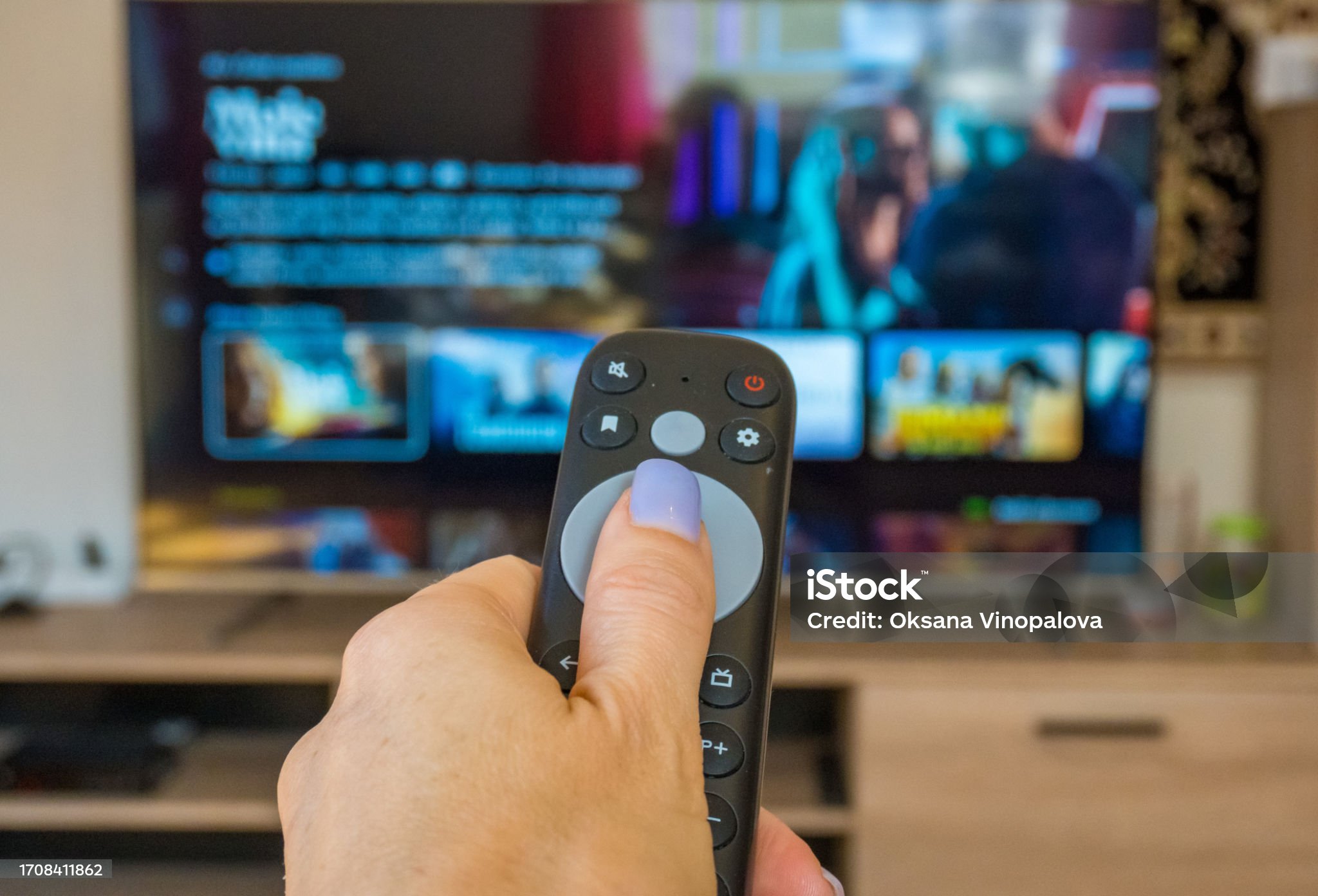1.Understanding IPTV

IPTV, also known as Internet Protocol Television, is gaining increasing influence within the media industry. Compared to traditional TV broadcasting methods that use pricey and primarily proprietary broadcasting technologies, IPTV is delivered over broadband networks by using the same Internet Protocol (IP) that serves millions of home computers on the current internet infrastructure. The concept that the same shift towards on-demand services is anticipated for the multiscreen world of TV viewing has already piqued the curiosity of various interested parties in the technology convergence and future potential.
Consumers have now begun consuming TV programs and other video entertainment in a variety of locations and on numerous gadgets such as mobile phones, desktops, laptops, PDAs, and various other gadgets, alongside conventional televisions. IPTV is still in its infancy as a service. It is expanding rapidly, and various business models are developing that could foster its expansion.
Some assert that cost-effective production will potentially be the first content production category to reach the small screen and capitalize on niche markets. Operating on the commercial end of the TV broadcasting pipeline, the current state of IPTV services and infrastructure, however, has several distinct benefits over its rival broadcast technologies. They include high-definition TV, on-demand viewing, personal digital video recorders, voice, web content, and responsive customer care via alternate wireless communication paths such as mobile phones, PDAs, satellite phones, etc.
For IPTV hosting to function properly, however, the Internet edge router, the core switch, and the IPTV server consisting of video encoders and server blade assemblies have to interoperate properly. Multiple regional and national hosting facilities must be entirely fail-safe or else the broadcast-quality signals fail, shows could disappear and don’t get recorded, communication halts, the visual display vanishes, the sound becomes choppy, and the shows and services will fail to perform.
This text will examine the competitive environment for IPTV services in the U.K. and the US. Through such a side-by-side examination, a series of important policy insights across multiple focus areas can be revealed.
2.Media Regulation in the UK and the US

According to the legal theory and corresponding theoretical debates, the regulatory strategy adopted and the policy specifics depend on one’s views of the market. The regulation of media involves competition policy, media control and proprietorship, consumer safeguarding, and the defense of sensitive demographics.
Therefore, if we want to regulate the markets, we must comprehend what defines the media market landscape. Whether it is about proprietorship caps, competition analysis, consumer protection, or media content for children, the policy maker has to understand these sectors; which media sectors are growing at a fast pace, where we have competition, vertical consolidation, and ownership crossing media sectors, and which sectors are lagging in competition and suitable for fresh tactics of industry stakeholders.
To summarize, the landscape of these media markets has consistently evolved to become more fluid, and only if we reflect on the policymakers can we anticipate upcoming shifts.
The expansion of Internet Protocol Television everywhere makes its spread more common. By combining a number of conventional TV services with innovative ones such as interactive IT-based services, IPTV has the potential to be a key part of increasing the local attractiveness of remote areas. If so, will this be enough to prompt regulatory adjustments?
We have no proof that IPTV has extra attractiveness to the people who do not subscribe to cable or DTH. However, certain ongoing trends have had the effect of putting a brake on IPTV growth – and it is these developments that have led to reduced growth expectations for IPTV.
Meanwhile, the UK adopted a liberal regulation and a proactive consultation with industry stakeholders.
3.Major Competitors and Market Dynamics

In the UK, BT is the leading company in the UK IPTV market with a market share of 1.18%, and YouView has a market share of 2.8%, which is the scenario of single and dual-play offerings. BT is generally the leader in the UK according to market data, although it fluctuates slightly over time across the range of 7 to 9%.
In the United Kingdom, Virgin Media was the initial provider of IPTV based on digital HFC networks, with BT entering later. Netflix and Amazon Prime are the dominant streaming providers in the UK IPTV market. Amazon has its own streaming device service called Amazon Fire TV, comparable to Roku, and has just entered the UK. However, Netflix and Amazon are absent from telecom providers' offerings.
In the United States, AT&T leads the charts with a 17.31% stake, exceeding Verizon’s FiOS at 16.88 percent. However, considering only DSL-based IPTV services, the leader is CenturyLink, followed by AT&T and Frontier, and Lumen.
Cable TV has the majority hold of the American market, with AT&T managing to attract 16.5 million IPTV customers, largely through its U-verse service and DirecTV service, which also functions in the Latin American market. The US market is, therefore, divided between the major legacy telecom firms offering IPTV services and emerging internet-based firms.
In Europe and North America, leading companies use a converged service offering or a loyal customer strategy for the majority of their marketing, offering three and four-service bundles. In the United States, AT&T, Verizon, and Lumen largely use infrastructure owned by them or legacy telecom systems to provide IPTV options, albeit on a smaller scale.
4.Subscription Types and Media Content

There are distinct aspects in the media options in the UK and US IPTV markets. The range of available programming includes real-time national or local shows, streaming content and episodes, pre-recorded shows, and original shows like TV shows or movies exclusive to the platform that could not be bought on video or aired outside the platform.
The UK services feature classic channel lineups akin to the UK cable platforms. They also offer mid-size packages that cover essential pay-TV options. Content is grouped not just by genre, but by distribution method: terrestrial, satellite, Freeview, and BT Vision VOD.
The primary distinctions for the IPTV market are the payment structures in the form of fixed packages versus the more flexible per-channel approach. UK IPTV subscribers can opt for extra content plans as their viewing tastes change, while these channels come pre-bundled in the US, in line with a user’s initial long-term plan.
Content alliances highlight the different legal regimes for media markets in the US and UK. The trend of reduced exclusivity periods and the evolving industry has major consequences, the most direct being the market role of the UK’s leading IPTV provider.
Although a late entrant to the saturated and challenging UK TV sector, Setanta is positioned to gain significant traction through its innovative image and securing top-tier international rights. The power of branding plays an essential role, paired with a product that has a cost-effective pricing and offers die-hard UK football supporters with an appealing supplementary option.
5.Emerging Technologies and Upcoming Innovations

5G networks, combined with millions of IoT devices, have stirred IPTV evolution with the implementation of AI and machine learning. Cloud computing is strongly supporting AI systems to unlock novel functionalities. Proprietary AI recommendation systems are increasingly being implemented by content service providers to engage viewers with their own advantages. The video industry has been enhanced with a modernized approach.
A enhanced bitrate, either through resolution or frame rate advancements, has been a primary focus in boosting audience satisfaction and expanding subscriber bases. The technological leap in recent years resulted from new standards crafted by industry stakeholders.
Several proprietary software stacks with a smaller footprint are close to deployment. Rather than releasing feature requests, such software stacks would allow streaming platforms High-Quality IPTV Streaming to prioritize system efficiency to further enhance user experience. This paradigm, reminiscent of prior strategies, depended on consumer attitudes and their desire to see value for their money.
In the near future, as rapid tech uptake creates a uniform market landscape in user experience and industry growth stabilizes, we predict a focus shift towards service-driven technology to keep elderly income groups interested.
We emphasize a couple of critical aspects below for both IPTV markets.
1. All the major stakeholders may play a role in shaping the future in media engagement by transforming traditional programming into interactive experiences.
2. We see immersive technologies as the key drivers behind the rising trends for these fields.
The ever-evolving consumer psychology puts data at the forefront for every stakeholder. Legal boundaries would limit straightforward access to consumers' personal data; hence, privacy regulations would hesitate to embrace new technologies that may leave their users vulnerable to exploitation. However, the present streaming landscape indicates a different trend.
The digital security benchmark is currently extremely low. Technological leaps and bounds have made system hacking more virtual than manual efforts, thereby advantaging cybercriminals at a higher level than black-collar culprits.
With the advent of hub-based technology, demand for IPTV has been growing steadily. Depending on user demands, these developments in technology are set to revolutionize IPTV.
References:Bae, H. W. and Kim, D. H. "A Study of Factors affecting subscription to IPTV Service." JBE (2023). kibme.org
Baea, H. W. and Kima, D. H. "A Study about Moderating Effect of Age on The IPTV Service Subscription Intention." JBE (2024). kibme.org
Cho, T., Cho, T., and Zhang, H. "The Relationship between the Service Quality of IPTV Home Training and Consumers' Exercise Satisfaction and Continuous Use during the COVID-19 Pandemic." Businesses (2023). mdpi.com